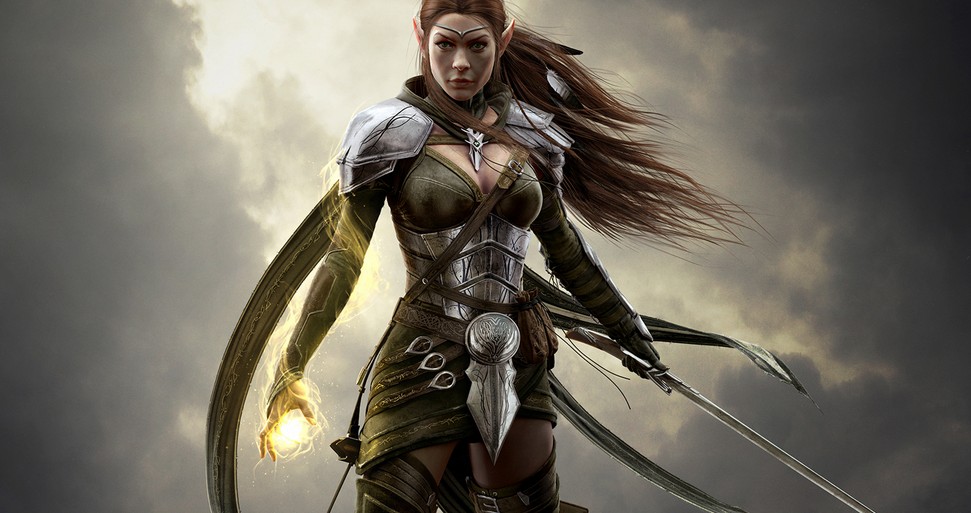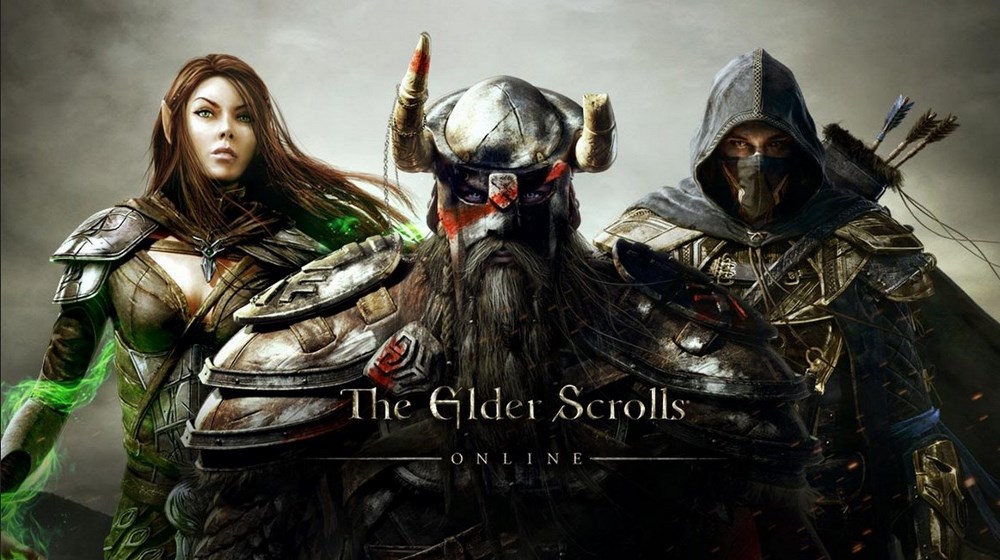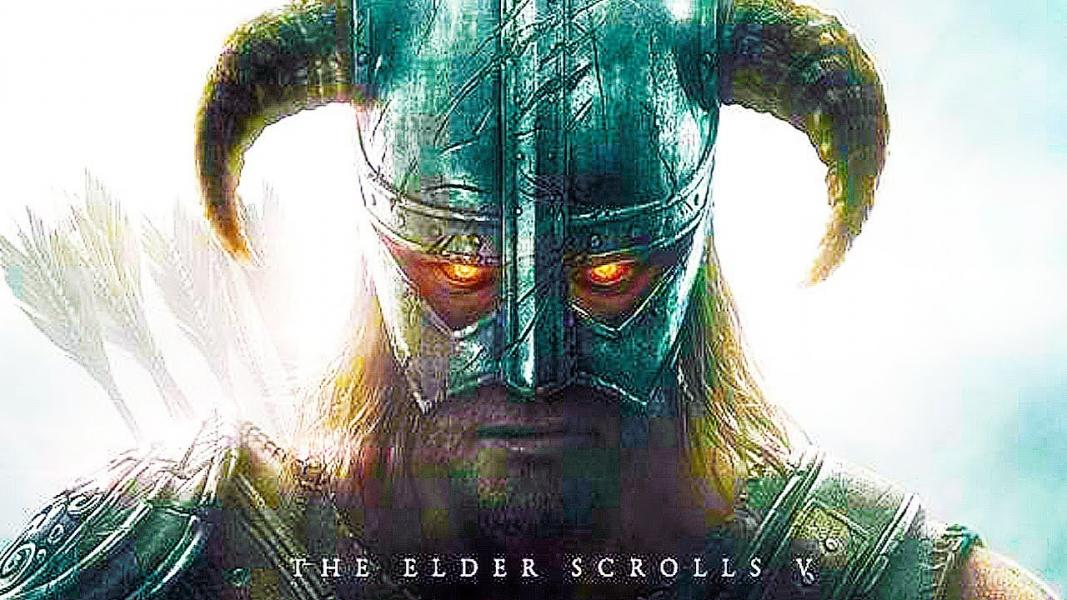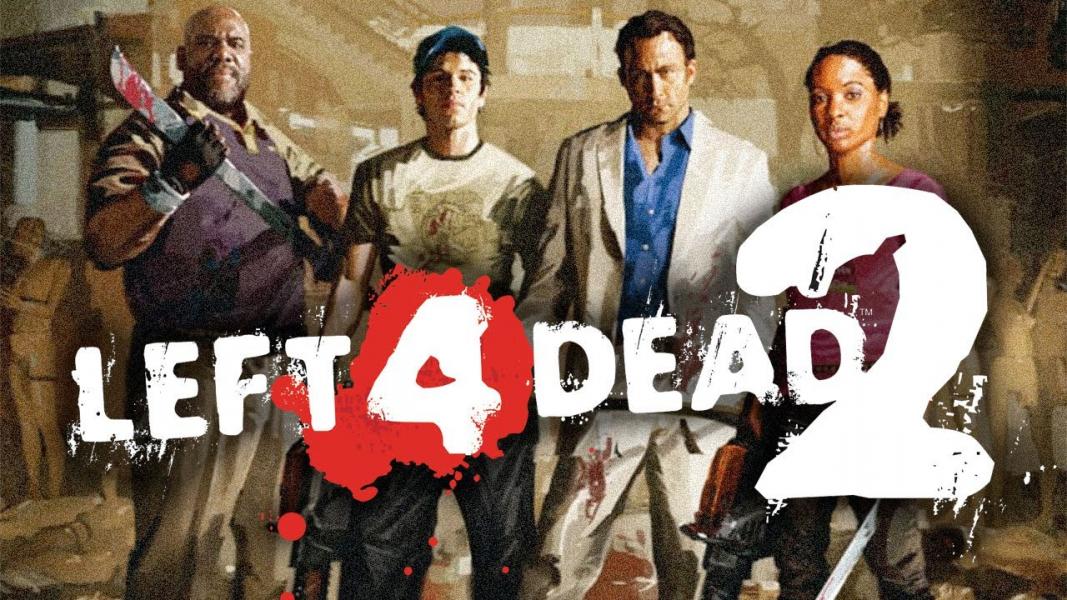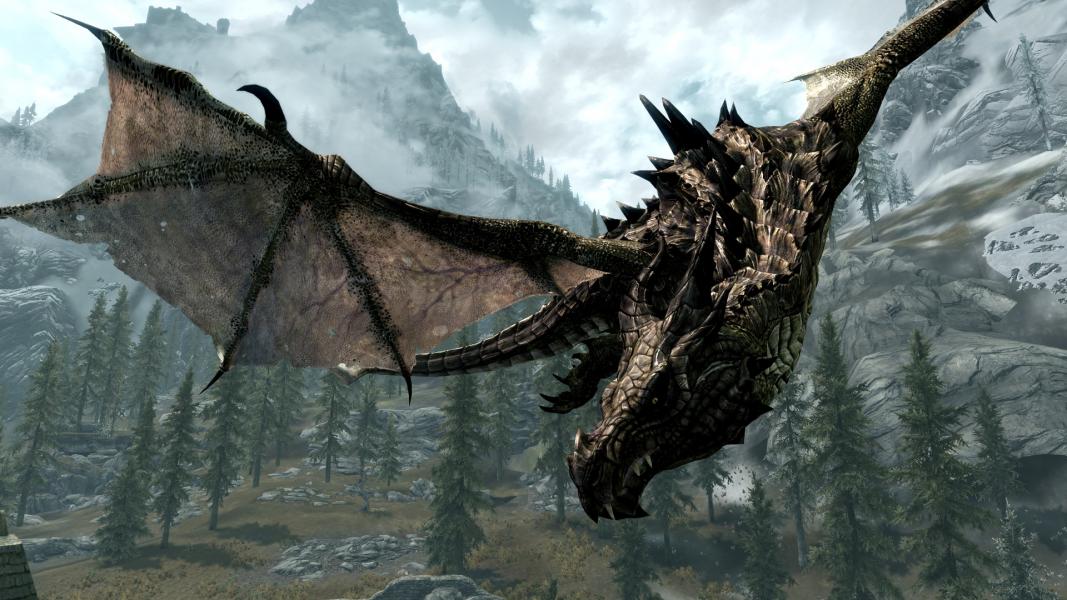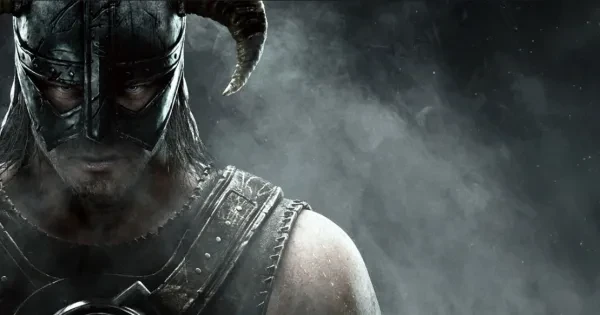
Which Is The Best Elder Scroll Game of All Time?
Bethesda’s highly acclaimed series has a long history stretching back to the early days of open world RPGs.
Although they’ve only released a handful of titles in the past twenty-five years, the time and care they devote to each individual game defines entire decades of RPG design.
Through expansive, sandbox-oriented worlds, Bethesda has amassed a following of devoted fans who just want to keep exploring the world of Tamriel. Here at Gamer’s Decide, we’ve arranged our ranking of the top five most enjoyable Elder Scrolls experiences available.
5. Oblivion
A few fans of this 2006 Game of the Year winner might be shocked that it’s so far down on the list. Just because it’s at the bottom doesn’t mean we think it’s a bad game (sorry Arena), but perhaps one that didn’t have its formula figured out yet. Admittedly, Oblivion does have a really fascinating story, in many ways more intriguing than Morrowind. The story is set in the Imperial Kingdom of Cyrodiil, where the player is freed from prison after witnessing the Emperor of Tamriel get murdered. After obtaining their freedom, the player may set out and journey across Cyrodiil, but now that the Emperor is dead, the forces of the Daedra (demonic hellbeasts) are free to enter Tamriel and take over the land.
Oblivion unfortunately has one of the shortest stories in the series. As intriguing as the oblivion gate crisis becomes, it’s over just as soon as it starts, and then you’re left to complete sidequests. It’s also an interesting title in the series because it sticks out compared to Morrowind and Skyrim. Whereas the third and fifth Elder Scrolls games embrace a certain diversity in Tamriel, be it through architecture, terrain, or the people, Oblivion feels more Euro-centric. This doesn’t harm the game in any way, but it does make a distinct aesthetic choice that differs from other games in the series.
Oblivion does do a lot right, though. Though the main story is short, the guild quests (Mages, Fighters, Dark Brotherhood, Thieves) have extremely long storylines, taking as long as or longer than the main story. Additionally, while Bethesda’s 2008 followup Fallout 3 received higher praise for the sheer amount of things to do in its world, Oblivion sets the groundwork for an easily explored, beautifully rendered English countryside filled with monsters to fight and caves to explore. And isn’t that what The Elder Scrolls is all about?
What’s great about this game:
- Brilliantly written characters from start to finish.
- The Shivering Isles DLC- honestly, this should get an honorable mention. Shivering Isles adds an entire storyline that parallels the Oblivion Gate crisis, with its own mythology and surreal imagery to back it up.
- A truly beautiful world with Roman and European inspired architecture.
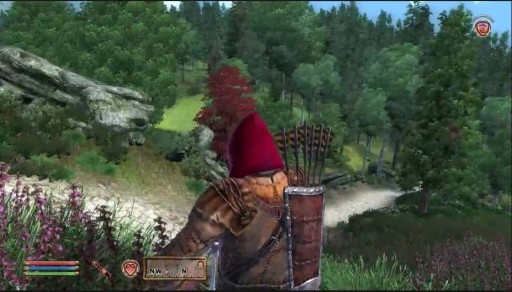
Ride the high country: Oblivion features an expansive map with a range of biomes to explore. Look at this guy here, crouching on a rock waiting to snipe passersby!
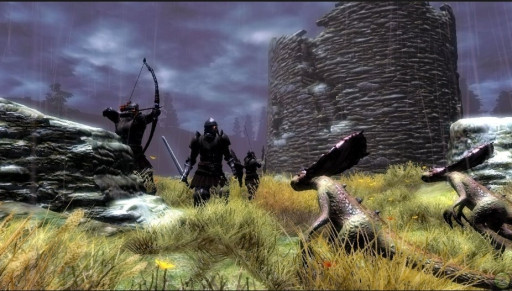
Demonic invasion afoot: Oblivion’s story centers on the rise of the Daedra. You must repel the threat to save Tamriel!
4. Daggerfall
Some TES fans would say that Daggerfall is, without a doubt, the best Elder Scrolls game. And granted, it’s got the biggest world, the map stretching over two provinces rather than one. Bethesda director Todd Howard even boasted that Morrowind was a mere 0.01% the size of Daggerfall- however, this is achieved through random generation, rather than carefully sculpted terrain.
Generally speaking, Daggerfall set the groundwork for what Morrowind and all subsequent Elder Scrolls games do. The goal was to give players a massive, sprawling fantasy world rich with opportunity to explore- and it seems they made the biggest world out of the series in 1996. Granted, the graphics are dated- by today’s standards, a comparable game would be Minecraft. The combat, however, is surprisingly well calculated for the time, utilizing mouse movement rather than tabletop-style probability to determine effectiveness of attacks.
Overall, Daggerfall had admittedly less impact than its successor, due in part to the thing that made it so unique- randomly generated terrain, at the time the game was made, was rather limiting, and as a result the game re-uses a lot of its own building blocks in creating the world. Therefore, the game has some noticeable monotony that players and critics got tired of. Bethesda made note of this and set out in Morrowind to create a more fully-realized world.
What’s great about this game:
- Massive, procedurally generated world.
- Even today, the graphics hold up impressively well considering that this game came out in 1998.
- An unusual story akin to other classic 90s fantasy dungeon crawlers (Zelda, King’s Field).
It’s free on the Bethesda website!
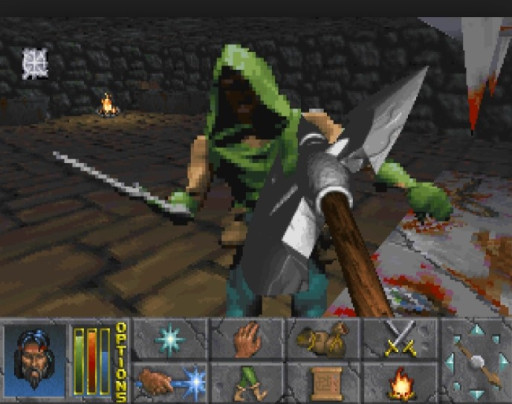
Point and click: Daggerfall used a unique combat system where dragging the mouse across the screen simulates the swing of an axe.
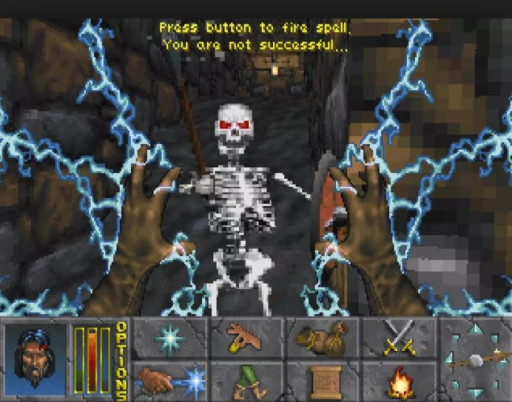
Infinite dungeons: Besides a few set dungeons, Daggerfall will change via procedural generation every time you play it.
3. Elder Scrolls Online
Ah, the most divisive game in the series! Though it was met with a ton of initial criticism, Bethesda took the time to refine and develop the game into a genuinely enjoyable experience. So, we’ll break down the pros and cons of the most recent addition to the franchise.
ESO has received a great deal of improvement in the three years since its atrocious premiere date. However, Bethesda was not predominantly an online gaming company- what with all of their best and most commercially successful titles being single-player RPGs. So their first foray into MMO style gaming was shaky at best. The game now is far more streamlined, with opportunities to expand the map treated as DLC. Slowly, players can build a map as big as what Daggerfall and Arena aimed for, except with vastly more detail to the world.
On top of all that, it’s absolutely worth applauding ESO’s narrative components. One of the most critically acclaimed storylines in Skyrim was the civil war between the Imperials and the rebel Stormcloak faction. Since people really wanted a fantasy world with large-scale battles, they implemented factions into Elder Scrolls Online and pitted players against one another across large expanses of land, using this as an opportunity to delve into the history of Tamriel and one of the biggest wars ever faced in the fictional kingdom. As Bethesda fine tuned and perfected their model, they pushed the narrative and world-building elements to an extreme that they haven’t accomplished in any other game.
What’s great about this game:
- Finds a new way to present the series, by having players cooperate and compete online.
- Returns access to all of Tamriel, presenting the biggest and most detailed Elder Scrolls world yet.
- The game is designed in such a way that, if you’re really set on the traditional solo-hero vibe of previous games in the series, there’s absolutely enough content for you to get that experience.
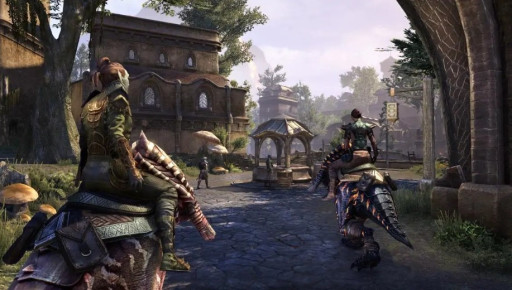
What on Earth are they riding?!: Elder Scrolls Online gives you access to all of Tamriel, allowing you to play any version of the world you choose. Ride horses, ride whatever those things are- the world is your oyster.
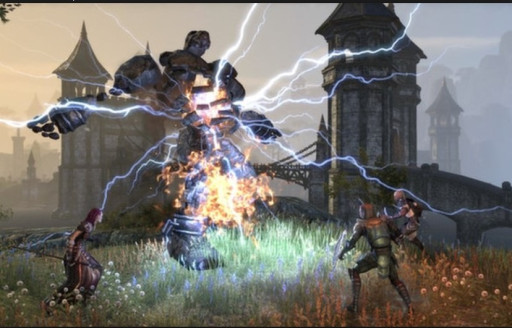
Gang up and slay: Like all MMOs, ESO encourages you to play with your friends or make new ones quickly, to take down some of Tamriel’s most sizable threats.
2. Morrowind
Morrowind was a lot of people’s first Elder Scrolls game. Standing as the third title in the series, Morrowind opens like Skyrim with the player character (created and named by the player) taken by boat as a prisoner to the island province of Morrowind. As the player delves deeper into the world and learns more of the mythic forces at work in Morrowind, they soon come to realize that their arrival on this island was no mere coincidence, but instead an act of destiny.
Morrowind has, without a doubt, the most riveting and in-depth story of any of the Elder Scrolls games. The plot derives influence from a number of different myths, from King Arthur to Siddhartha. Though this was pre-Bethesda utilizing voice actors, the primarily text-based speech of the game lends to rich and 3-Dimensional characters. Whereas one can beat the main story arc for Oblivion or Skyrim in less than a week, it takes at least a month to finish the main story to Morrowind, but like all Elder Scrolls games, you’re most certainly going to get drawn off that path to explore the rich world around.
The one major and unavoidable criticism of Morrowind is its playability. This is unfortunate- if the game held up better today, it would be number one on the list, without a doubt. However, the game has an awkward leveling and combat system, where it’s fundamentally impossible to hit any enemies with your melee weapons or cast any spells until you’ve reached a level where your strength is higher than everything’s AC. Prior to that you can swing your sword at something as many times as you want and only get two or three hits in. Still, a lot of the best aesthetic pieces of Morrowind (i.e. Dwemer Ruins, mushroom cities) were maintained in Skyrim and it’s followup DLC Dragonborn.
What’s great about this game:
- Rich, epic story filled with fascinating characters.
- Amazing DLC (Tribunal and Bloodmoon)
- First Elder Scrolls game to try a different look than traditional European architecture, going instead for a Middle Eastern aesthetic.
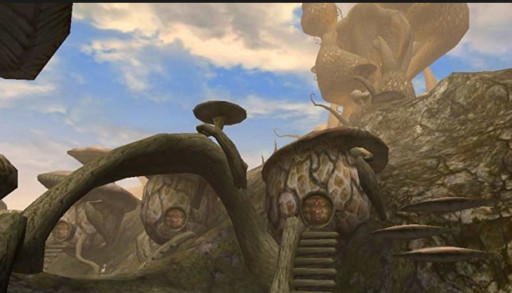
Psychedelic jungle: The actual land of Morrowind has one of the most diverse biomes in the series, featuring river cities and distant villages with houses hollowed out from giant mushrooms.

Werewolves and bear-nords: Morrowind also offered an early dose of Skyrim with the Bloodmoon DLC.
1. Skyrim
An absolute victory for Bethesda on all fronts, The Elder Scrolls V: Skyrim stands as a defining open world RPG for the fantasy genre. Utilizing a combination of in innovative design techniques for weather and environment, coupled with a full re-imagining of how the Elder Scrolls series could work mechanically, Skyrim was unquestionably one of the most important games of the decade.
If you somehow missed this title (how could you?), it starts off like all the other Elder Scrolls games- you’re a prisoner, about to be executed in the titular Nordic kingdom of Skyrim, when a dragon attacks and you manage to escape’re saved. You set off into the wilderness of this massive world, battling dragons and meeting all sorts of different fantastical characters along the way.
Even after beating all the dragons and saving the world, you’ve only scratched the surface. The game is filled with densely written lore and character arcs, with only one REAL objective for the player: explore, and make this world your oyster. You can go wherever you want, fight whatever you want, and obtain power and responsibility through the world via the outcomes of your actions.
What’s great about this game:
- Insanely detailed, fully explorable world filled with magic and wonder.
- Both an excellent introductory game to the series that still has plenty of callbacks and lore for longtime fans.
- Strongest combat system of the series, utilizing a dual-wielding system that allows players to customize their exact preferred playstyle.
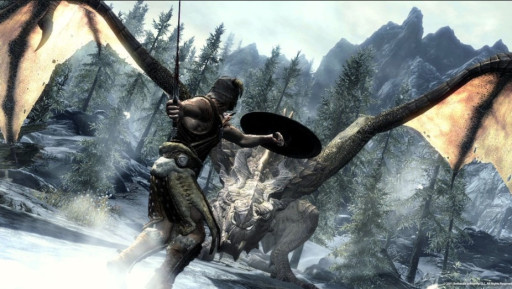
Ah, a worthy adversary: Skyrim was the first Elder Scrolls game to extensively feature dragons at the heart of its story, counter to expectations in the fantasy genre.
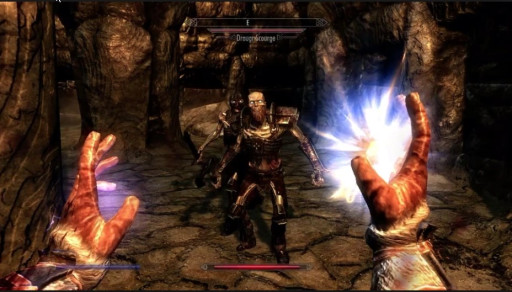
Dual wield and cause mayhem: Skyrim’s combat is centered around having two “hands” that you can equip with either a melee weapon, a two-handed weapon (bow, greatsword), or all sorts of magic.
You may also be interested in:
- Top 15 Games Like Skyrim (Games Better Than Skyrim in Their Own Way)
- The Elder Scrolls 6 Release Date (and 10 Things It Must Have)
- Top 10 Games Like The Elder Scrolls Online (Games Better Than ESO in Their Own Way)



